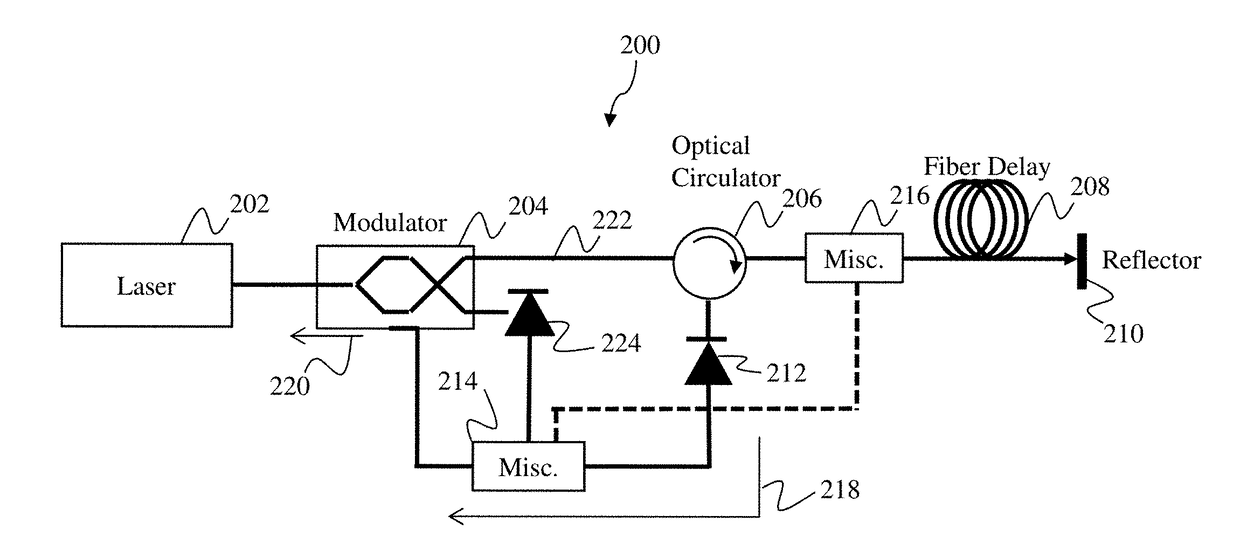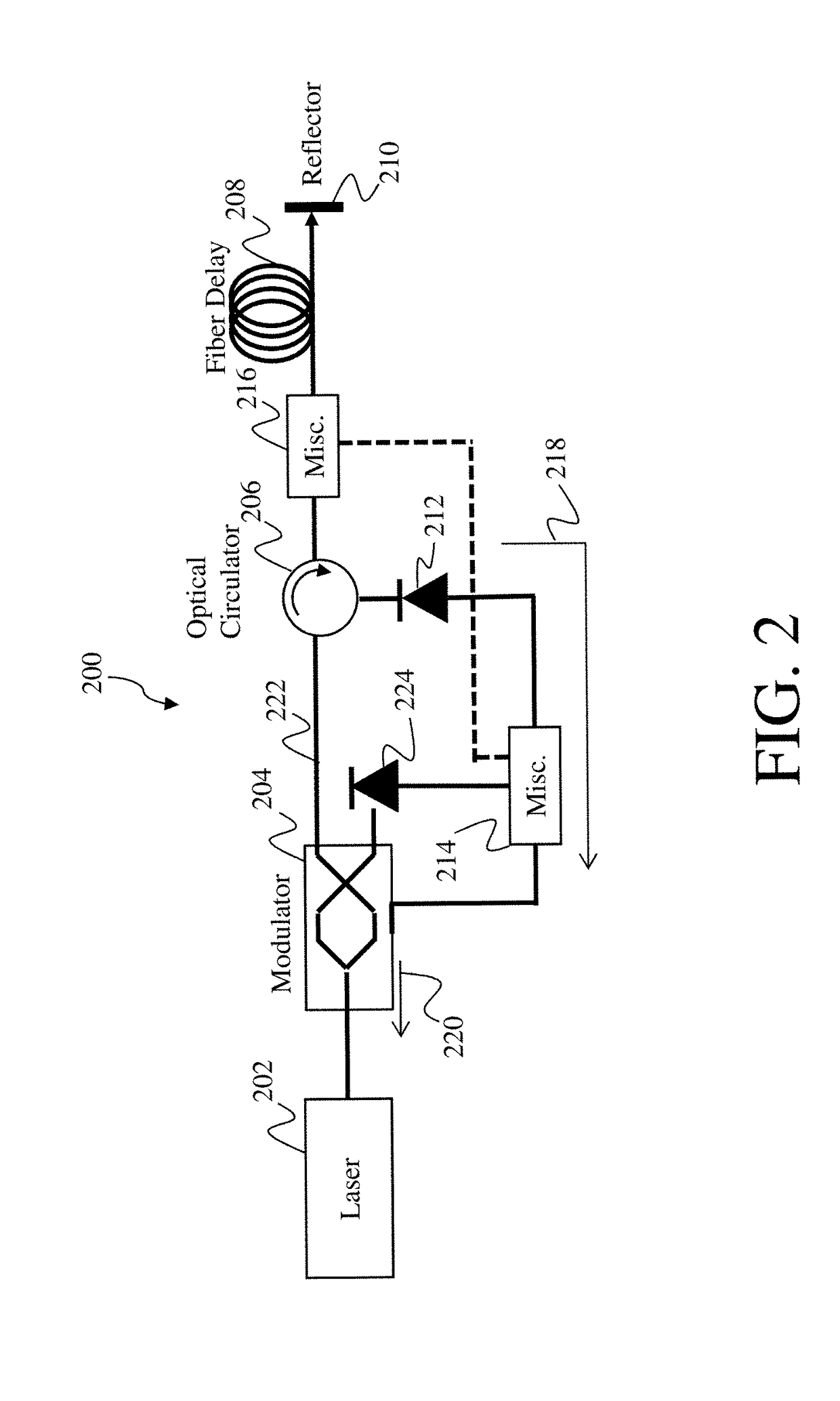Methods and systems for reducing noise in optoelectronic oscillators
a technology of optoelectronic oscillators and noise reduction, which is applied in the direction of radio-over-fiber, electrical equipment, fiber transmission, etc., can solve the problems of reducing the overall spectral purity of the source, reducing the phase noise of the conventional architecture, etc., and achieves the reduction of inherent fiber noise, reducing the noise of the optoelectronic oscillator, and increasing the fiber-optic path length
- Summary
- Abstract
- Description
- Claims
- Application Information
AI Technical Summary
Benefits of technology
Problems solved by technology
Method used
Image
Examples
Embodiment Construction
[0021]Aspects and embodiments are directed to an approach for reducing phase noise in optoelectronic oscillators. Certain examples involve the implementation of a double pass configuration optoelectronic oscillator system, which may include optical circulators, retro-reflectors, couplers, or other similarly functioning elements, positioned within a fiber-optic path of the system. These examples allow for inherent fiber noise cancellation through active, or passive, approaches. Additional components and devices, such as amplifiers, modulators, phase shifters, and optical filters, may be included to further reduce inherent fiber noise (and / or environmentally induced noise) and allow an increased fiber-optic path length, with a low close-in phase noise.
[0022]Oscillators with a high stability timing and low close-in phase noise are desired for numerous applications. Several devices and systems have been proposed for generating a reference oscillator with these characteristics. One such ...
PUM
 Login to View More
Login to View More Abstract
Description
Claims
Application Information
 Login to View More
Login to View More - R&D
- Intellectual Property
- Life Sciences
- Materials
- Tech Scout
- Unparalleled Data Quality
- Higher Quality Content
- 60% Fewer Hallucinations
Browse by: Latest US Patents, China's latest patents, Technical Efficacy Thesaurus, Application Domain, Technology Topic, Popular Technical Reports.
© 2025 PatSnap. All rights reserved.Legal|Privacy policy|Modern Slavery Act Transparency Statement|Sitemap|About US| Contact US: help@patsnap.com



